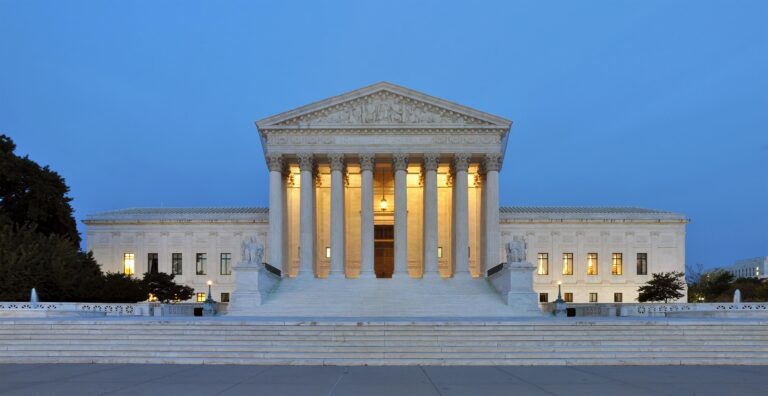Supreme Court Ruling Reshapes EPAŌĆÖs Role in Sewage Discharge Regulation
In a landmark decision with profound environmental consequences, the U.S. Supreme Court has ruled in favor of San Francisco, significantly restricting the Environmental Protection AgencyŌĆÖs (EPA) capacity to regulate certain municipal sewage discharges. This verdict represents a critical juncture in the ongoing discourse surrounding federal oversight versus local governance of water pollution, potentially transforming how urban waterways are managed across the United States. The ruling spotlights the delicate balance between safeguarding environmental health and respecting municipal independence amid aging infrastructure and escalating regulatory demands.
Redefining Federal Oversight: The Supreme CourtŌĆÖs Impact on EPA Authority
The Supreme CourtŌĆÖs recent judgment curtails the EPAŌĆÖs previously broad authority to enforce stringent sewage discharge regulations under federal environmental statutes. Originating from a dispute with San Francisco, the Court sided with the cityŌĆÖs argument that the EPA had overstepped its bounds by imposing rigorous federal controls on local sewage systems without explicit legislative backing. This decision effectively grants municipalities increased discretion in managing their wastewater permits and limits the EPAŌĆÖs unilateral enforcement capabilities.
Major consequences of this ruling include:
- Enhanced local control over sewage discharge permitting processes
- Potential relaxation of federal pollution standards for municipal wastewater systems
- Heightened procedural challenges for the EPA in pursuing enforcement actions
| Regulatory Aspect | EPA Authority Before Ruling | EPA Authority After Ruling |
|---|---|---|
| Permit Issuance | EPA could enforce strict federal permits | Local agencies gain predominant control over permits |
| Enforcement Powers | EPA independently imposed penalties | EPAŌĆÖs enforcement actions face new limitations |
| Scope of Regulation | Broad inclusion of municipal sewage discharges | More narrowly defined EPA jurisdiction |
San FranciscoŌĆÖs Response: Strengthening Local Environmental and Public Health Initiatives
Following the Supreme CourtŌĆÖs decision, San Francisco is pivoting towards greater self-reliance in managing its sewage discharge challenges. With federal oversight curtailed, the city is accelerating efforts to implement innovative, locally tailored solutions to protect water quality and coastal ecosystems. This shift necessitates comprehensive legislative updates and the adoption of advanced pollution control measures designed to address the cityŌĆÖs unique environmental context.
- Expanded water quality surveillance programs to compensate for reduced federal monitoring
- Increased investment in sustainable infrastructure such as green roofs, rain gardens, and permeable pavements
- Stricter regulations on industrial and residential wastewater discharges to minimize pollutant loads
- Enhanced community outreach campaigns promoting pollution prevention and environmental stewardship
From a public health standpoint, the ruling raises concerns about potential upticks in contaminants linked to sewage, which could affect residentsŌĆÖ health if local oversight is insufficient. In response, San FranciscoŌĆÖs health authorities are intensifying pathogen monitoring and bolstering rapid response protocols to prevent waterborne disease outbreaks. This situation underscores the critical need for close collaboration between environmental experts and healthcare providers to swiftly identify and mitigate health risks associated with sewage pollution.
| Public Health Initiative | Objective | Current Implementation |
|---|---|---|
| Pathogen Testing in Water | Early detection of harmful microorganisms | Testing frequency increased since ruling |
| Public Health Advisories | Timely communication of contamination risks | New digital alert systems launched |
| Community Health Education | Promote preventive behaviors | Expanded partnerships with local health clinics |
Legal Perspectives: Challenges for Federal Environmental Enforcement Post-Ruling
Legal analysts emphasize that the Supreme CourtŌĆÖs ruling significantly narrows the EPAŌĆÖs enforcement toolkit under the Clean Water Act, complicating efforts to hold municipalities accountable for sewage pollution. By endorsing San FranciscoŌĆÖs position, the Court has restricted the definition of ŌĆ£discharge of pollutants,ŌĆØ which may set a precedent limiting federal regulatory reach in other environmental domains.
Experts highlight several emerging challenges:
- Heightened Evidentiary Requirements: The EPA must now present more concrete proof linking specific discharges to pollution, making investigations more complex.
- Ambiguities in Regulatory Language: The ruling introduces interpretative uncertainties that could prolong legal disputes between federal agencies and local governments.
- Jurisdictional Conflicts: States and municipalities may feel emboldened to resist federal regulations, potentially leading to a patchwork of enforcement standards nationwide.
| Challenge | Potential Consequence | Recommended Strategy |
|---|---|---|
| Increased Proof Burden | Delayed enforcement actions | Invest in advanced monitoring and data analytics |
| Regulatory Ambiguity | Frequent litigation | Advocate for clearer legislative definitions |
| State-Federal Jurisdictional Tensions | Fragmented regulatory landscape | Foster cooperative frameworks between governments |
Enhancing Cooperation: Strategies for Unified Water Safety Management
In light of the Supreme CourtŌĆÖs ruling, fostering stronger collaboration between local authorities and federal agencies is paramount to maintaining effective water pollution control. Local governments bring critical on-the-ground insights and rapid response capabilities, but their success depends on synergistic partnerships with federal bodies. Creating joint task forces can harmonize enforcement efforts, ensuring they meet both local public health priorities and federal regulatory standards. Additionally, investing in shared data systems will enable real-time water quality monitoring and transparent information exchange, empowering timely interventions.
Key focus areas for improved collaboration include:
- Regular interagency training and strategy sessions to align goals and update enforcement protocols
- Resource-sharing agreements to provide technical assistance and financial support to municipalities
- Community engagement programs that involve residents in water safety planning and pollution reporting
| Collaboration Component | Advantages |
|---|---|
| Integrated Monitoring Networks | Enhanced data reliability and faster response times |
| Joint Funding Initiatives | Improved capacity for infrastructure modernization |
| Unified Communication Systems | Streamlined engagement with stakeholders and the public |
Conclusion: Navigating a New Era in Water Pollution Regulation
The Supreme CourtŌĆÖs ruling signifies a transformative moment in environmental regulation, curtailing the EPAŌĆÖs authority to enforce water pollution controls on municipal sewage discharges. As cities like San Francisco confront the dual challenges of aging infrastructure and reduced federal oversight, the decision could have widespread ramifications for environmental protection and public health nationwide. The EPA has yet to outline its strategy for adapting to this new legal landscape, leaving policymakers, environmental advocates, and communities anticipating forthcoming regulatory adjustments and collaborative solutions.




